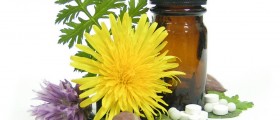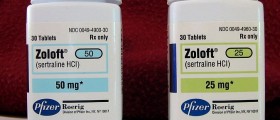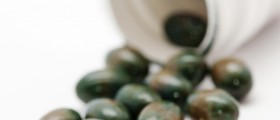
Quinine acts as powerful antipyretic (fever reducer) and analgesic (pain killing) substance. Because of its anti-inflammatory properties, quinine has been used in the treatment of certain ailments for many years. As a matter of fact, the first people who used quinine for medical purposes were the quechua Indians of Peru and Bolivia, who have been using quinine since at least the 17th century.
Quinine is Good Treatment for Malaria and It’s Found in Tonic Water
An interesting fact is that, in the 17th century, quinine was first used as a treatment option for people suffering from malaria triggered by Plasmodium falciparum. From that time until the 1940s, quinine remained the drug of choice for the treatment of malaria.
By the middle of the 20th century, scientists managed to discover several more efficient medications against this parasitic disease, with hloroquine and hydroxychloroquine both being derived from quinine.
Today people with malaria are generally treated with different commercial antimalarial drugs, while quinine may be prescribed on rare occasions in critical situations involving people living in poor region that are not well-supplied with modern medications.
As far as the United States are concerned, quinine is available as an over-the-counter medication, and it can be also prescribed by a health care provider, if necessary. Apart from being highly efficient against malaria (that is, the parasite causing malaria), quinine has been proven to help patients suffering from the autoimmune diseases lupus and arthritis.
Quinine was even used by individuals dealing with nocturnal leg cramps, but such treatment has never actually been officially approved by the FDA and is not based on sufficient scientific evidence. Hence, it is not recommended to try to manage leg cramps with quinine.
Finally, small amounts of quinine are found in tonic water, a favorite carbonated beverage among many people all around the world. Tonic water was first introduced in the United States in the 1950s, although it was actually discovered and patented in England in the 19th century, and early on, it was marketed as a medicinal drink.
Other Ingredients in Tonic Water
Since the very word “tonic” sounds like something beneficial for your health, many people wonder what the ingredients of this refreshing beverage are.
Quinine is the major ingredient of tonic water that gives it the drink its recognizable bitter aroma. It originated from colonial India, where the British troupes had many troubles with malaria. When it was found in the 17th century that this dangerous disease can be prevented and cured with quinine, a substance obtained from the bark of a tree called Cinchona, doctors wanted to distribute it more widely.
Since quinine has a very intensive and extremely unpleasant taste, soldiers were reluctant to take it regularly, even though it could save their lives. Finally, a more palatable way to consume quinine was found, after they mixed it with some gin, lemon and sugar. After quinine was brought back to England, it became the main ingredient of tonic water.
Today it is a known fact that quinine can only help with the symptoms of malaria, like high fever, and that a successful treatment of this disease requires antibiotics. In fact, in order for tonic water to be a cure for malaria, one would need to drink 60 oz of it, which is a lot. Because it still contains some quinine, this beverage is called “tonic”, but it also has newer ingredients, recently added to it, like fruit aromas. Nowadays, the ingredients of tonic water include spring water, natural quinine, sugar, citric acid, bitter herb extracts, carbonated water, sodium citrate, fruit flavors, preservatives and saccharin.
What Are the Side Effects of Quinine?
Even though quinine is a powerful substance that has health benefits, there are side effects. The side effects of quinine can affect people already suffering from certain medical conditions or individuals who take other medications together with quinine, but also people simply using quinine in the therapeutic doses recommended by their health care providers. These side effects of quinine are collectively described as cinchonism.
First of all, people who are allergic to components of quinine, quinidine or mefloquine, are advised against its consumption. Quinine is also contraindicated in individuals with bleeding disorders, a low platelet count, irregular heartbeat, low potassium levels, inflammation of the eye nerve, GSPD deficiency and myasthenia gravis.
Furthermore, pregnant women, nursing mothers, and women trying to conceive should consult their doctor or pharmacist before they use quinine. This also applies to people with allergies, heart problems, vision or hearing problems, liver or kidney conditions, depression, nerve or muscle problems and those about to undergo anesthesia.
As quinine may interact with many drugs, all people using prescription or over-the-counter medications, as well as herbal or dietary supplements, are advised to talk to their health care specialist before taking quinine.
Rashes, flushing and pruritus (itching) are most common dermatological side effects of quinine, while erythema (redness of the skin) and swelling have been reported only in rare cases. Quinine may affect the gastrointestinal tract by causing a stomach upset, nausea, pain or discomfort, vomiting, and diarrhea. Cases including neutropenia, purpura, disseminated intravascular coagulation, thrombocytopenia, ecchymosis and petechiae have been reported as well. Purpura-hemolytic uremic syndrome has been known to induce kidney failure.
Quinine may cause the appearance of asthma symptoms, hemoptysis and be a culprit of transient bilateral pulmonary infiltrates. Blurred vision, diplopia, reduced visual fields, disturbed color perception, photophobia, scotomata and blindness are all potential ocular side effects, whereas cardiac dysrhythmia is a side effect of this medicine on the cardiovascular system.
Quinine can easily interfere with the hepatic enzyme system and trigger liver poisoning, the symptoms of which disappear after discontinuation of the drug.Nervous system side effects include tinnitus, dizziness, syncope, confusion, vertigo, loss of hearing, anxiety and hyperactivity. Quinine also interferes with electrolyte balance and the level of blood sugar. It may provoke nose bleeding, bleeding of the gums and gastrointestinal bleeding.
In addition, a single oral dose of quinine produces hypersensitivity reactions, and a single oral dose of 2 to 8 grams of quinine may lead to a fatal outcome.
- www.nhs.uk/conditions/leg-cramps/
- medlineplus.gov/druginfo/meds/a682322.html
- Photo courtesy of InfluenZia marketing by Flickr: www.flickr.com/photos/influenzia/5690176160/

















Your thoughts on this
Loading...